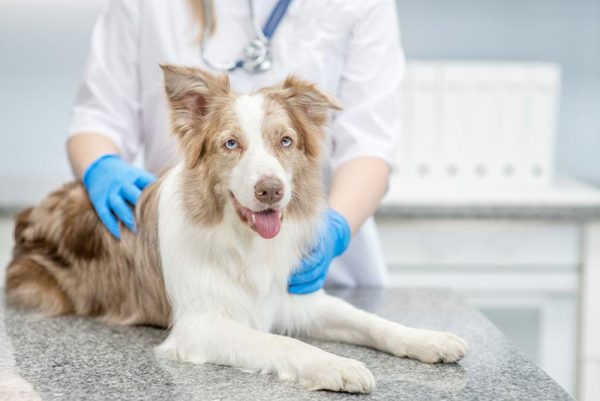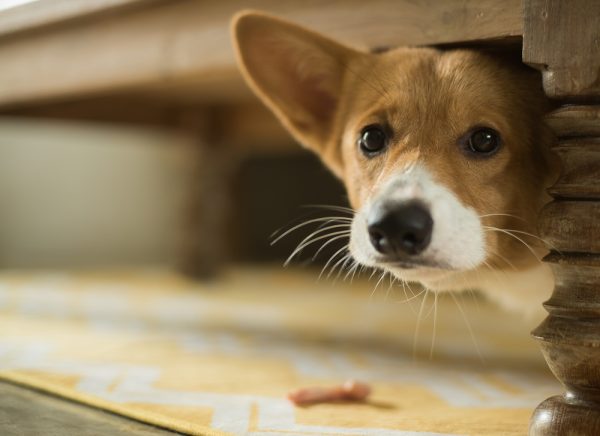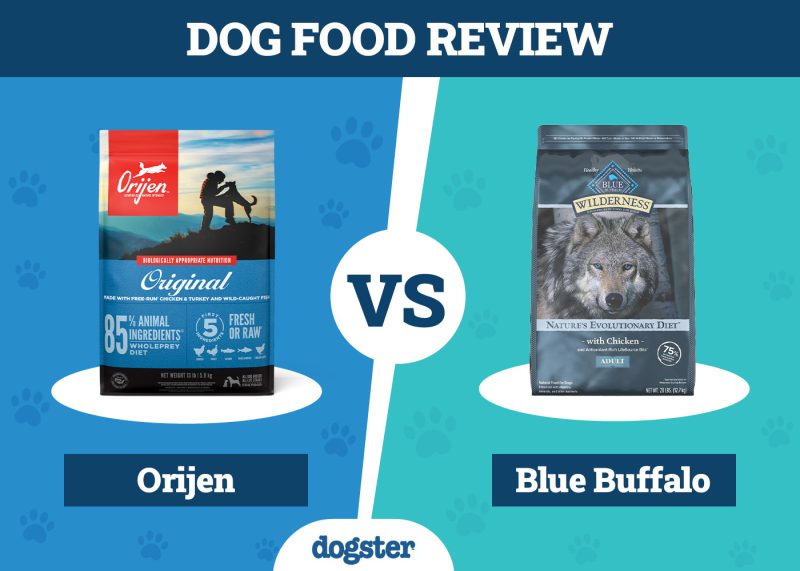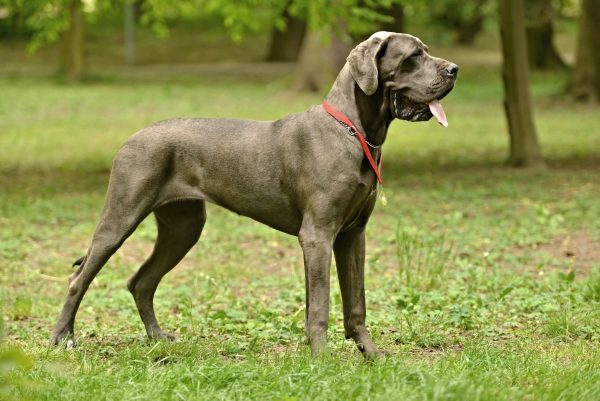Dogs descended from wolves, and while we find diverse breeds and body shapes in today’s canine community, the Husky is an instant reminder of their ancestral origin. Huskies have the appearance of undersized wolves, and their ties to ancient wolf progenitors still shine through in today’s dogs.
Still, a dog is a dog and not a wolf, and for every similarity between Huskies and wolves, there are at least as many distinguishing features. Discover what makes our domesticated dogs unique as we discuss the differences between Huskies and wolves.

Visual Differences
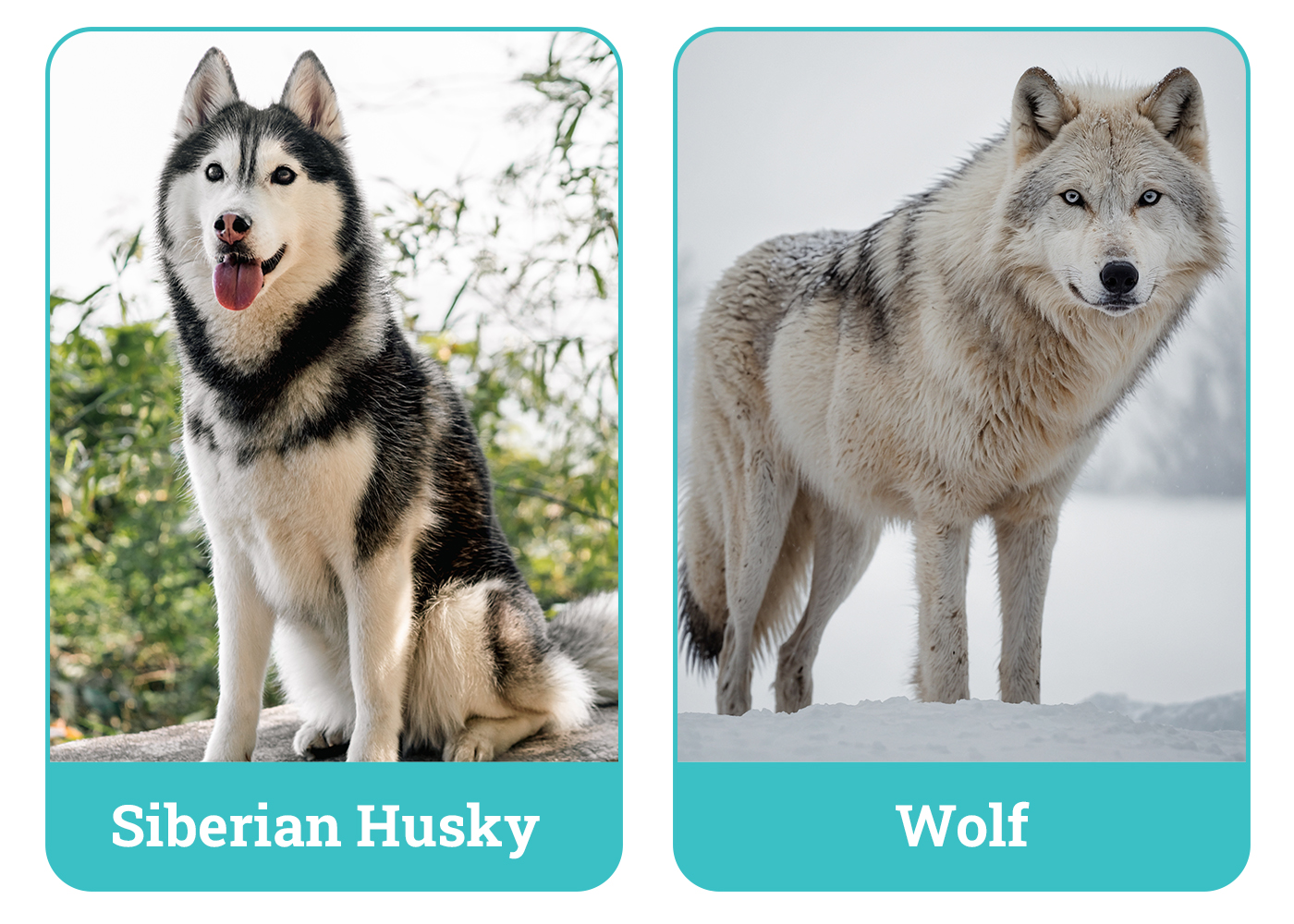
At a Glance
- Origin: Siberia
- Size: 20-23.5 in., 35–60 lbs.
- Lifespan: 12–14 years
- Domesticated?: Yes
- Origin: Eurasia
- Size: ~30 in., 70–150 lbs.
- Lifespan: 13–16 years
- Domesticated?: No

Husky Overview
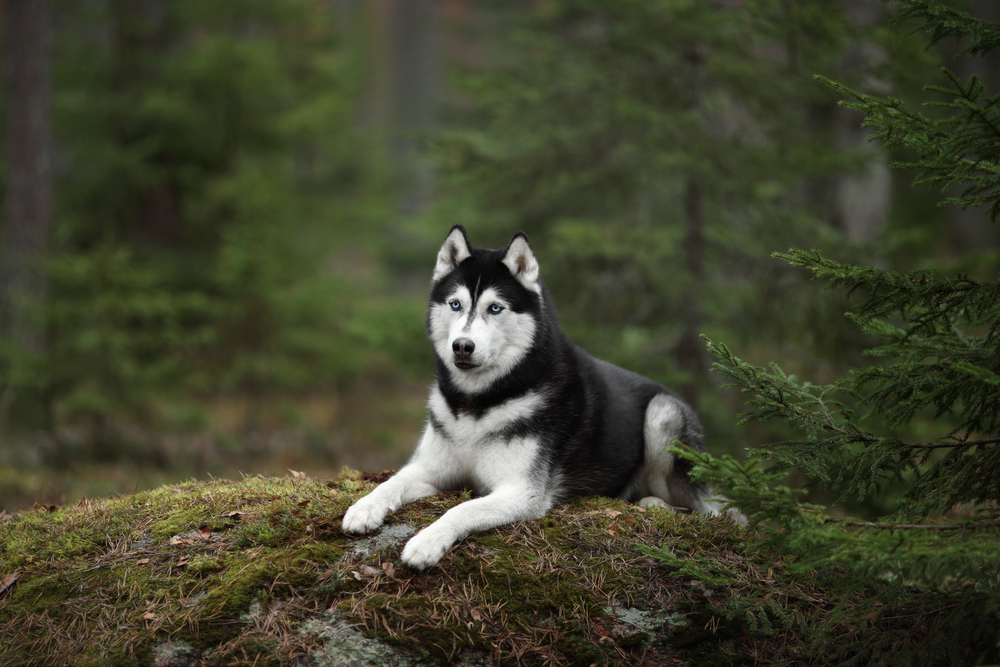
The Siberian Husky’s (Canis lupus familiaris) ancestors originated in the frigid Siberian landscape over 4,000 years ago. The Chukchi people native to the area used the dogs as sled dogs but also for hunting and family companionship. The outgoing breed may have wolf-like features, but they’re among the most playful and welcoming dogs you could ask for. They make poor guardians yet exceptional friends to anyone they meet.
Like Greenland’s indigenous dogs and other Arctic breeds, including the Alaskan Malamute and American Eskimo Dog, Huskies have close ancestry to ancient Taimyr and Yana RHS wolves. The now-extinct wolf varieties existed during the Pleistocene epoch roughly 35,000 years ago.
The ancient Husky breed is one of the oldest dog breeds in the world. They were among the first breeds to separate from their wolf ancestors. Alongside their wolfish physical features and native home’s proximity to many wolf populations, the Husky’s close connection to these wild canids may also influence the personality and temperament of the modern breed.
Characteristics & Appearance
Siberian Huskies are compact and well-muscled, with a look so lupine that many of us may even ask, “Are Huskies wolves?” The Husky has many wolf-like characteristics beyond the mid-length double coat, including perky rectangular ears and a mesocephalic snout.
A distinguishing feature for many Huskies is the striking blue irises appearing in one or both eyes. Others have more subdued brown eyes. Their heavy-shedding double coats appear in various shades, with black, gray, brown, red, or sable fur intermingling with contrasting bright white sections.
Personality
Though domesticated, Huskies are somewhat similar to wolves in being highly intelligent, notoriously independent, and mischievous. Many pet parents find their Huskies showcasing their abilities as escape artists and willing to make decisions that don’t align with their owner’s desires. Huskies are also vocal, delivering diverse barks, whines, yips, and howls that further elicit comparisons to wolves.
Despite the training challenges, Huskies are exceptionally affectionate with family, including small children, and outgoing with others. They’ll often initiate play with strangers and warmly greet outsiders with excited licks and fuss.
Most Huskies get along well with dogs, particularly other Huskies. The only expected conflict comes with undersized animals, as Huskies are prone to chasing cats, rabbits, and other small pets.
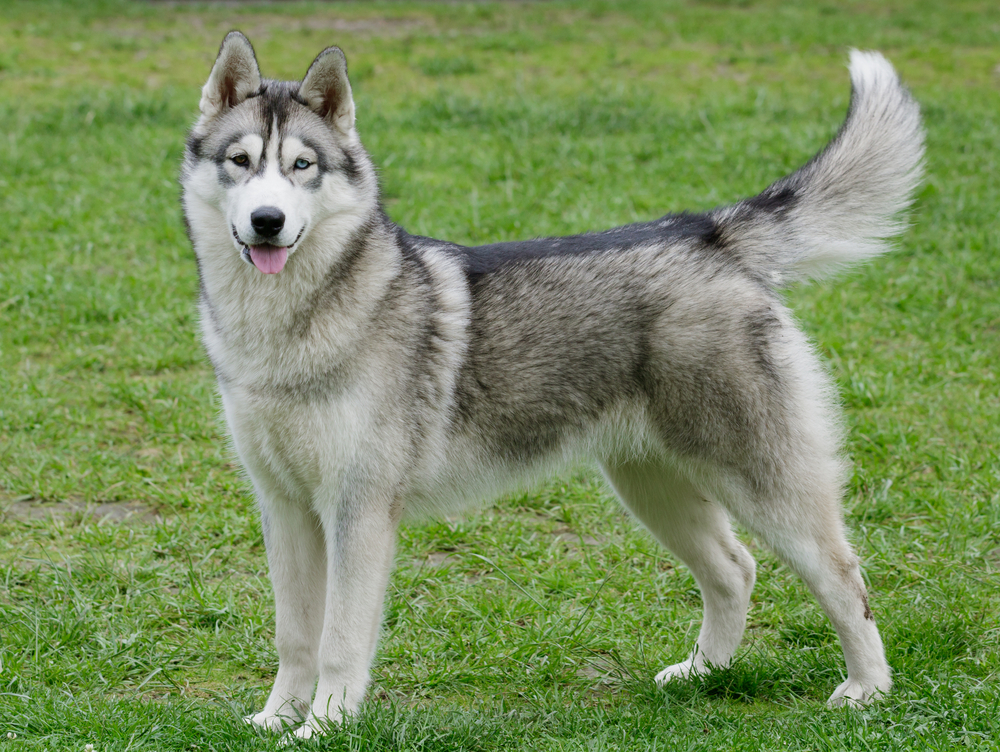
Uses
The nomadic Chukchi people, who lived in Siberia for thousands of years, used Siberian Huskies as their sled dogs. Their exceptional endurance allowed them to haul light loads over the challenging terrain. Working as a team, the dogs could cover up to 100 miles or even more in a single day.
In the early 1900s, these superior running skills made the difference in the nearly 700-mile Serum Run that brought a lifesaving diphtheria cure to Nome, Alaska. While many dogs participated, musher Leonhard Seppala’s Huskies, including Togo and Balto, became the effort’s heroic symbols.
When let loose in the summer, ancient Huskies hunted in packs, not unlike their wolf ancestors. During the cold winters, families would take them into their huts and sleep with them for warmth. We see all these ancestral qualities in the modern breed’s high energy, boundless affection, and heightened prey drive.

Wolf Overview
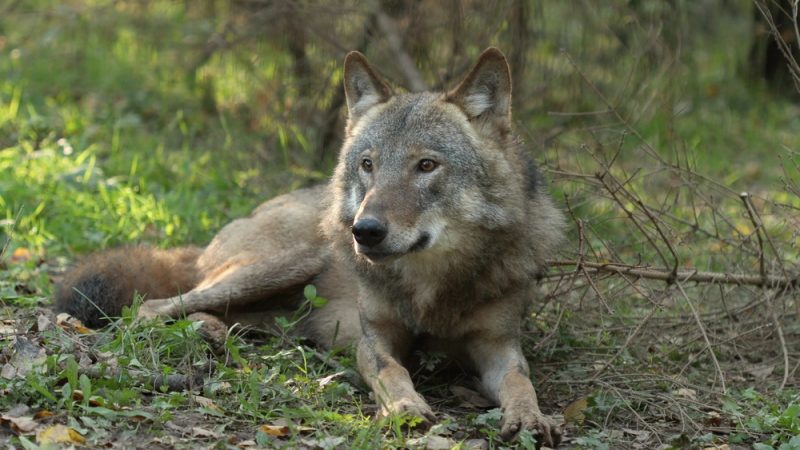
Wolves are undomesticated apex predators that have existed since ancient times. Three wolf species and nearly 40 subspecies exist today, spread across North America, Europe, and Asia.
Gray wolves (Canis lupus) are the most common of the roughly 200,000–250,000 wolves on the planet. Civilization’s expansion, climate change, and human hunting practices have caused wolf numbers to dwindle, pushing the U.S. to protect them under the Endangered Species Act in 2022.
Characteristics & Appearance
While we might consider Huskies to be wolf-like in appearance compared to other breeds, closer inspection reveals stark contrasts. Wolves are much larger, with bodies stretching up to 6 feet long and growing two to four times a Husky’s size. Their snouts are narrower and longer, their eyes are more almond-shaped, and their dull, gray hair tends to be much coarser than the Husky’s soft double coat.
Personality
Wolves live in packs with complex social structures, with certain members being the group’s leaders. In wild wolf packs the leaders are the breeding “parent” wolves and the rest of the pack is typically made up of other family members. Typically, only one pair breeds, and the pups stay until they are ready to strike out on their own and find mates. Wolves hunt cooperatively, communicate via howls instead of barking, and operate in large territories covering 10–200+ square miles, depending on the concentration of available prey.
Unlike dogs, wolves generally avoid humans, preferring to work solely with other wolves in packs of 4+ members. Young wolves strike out from their pack at 1–2 years to find mates and territories where they can form new packs.
Huskies resemble wolves in many personality aspects. Group members show similar signs of working in a group for the greater good. They also share the same communication styles. Huskies and wolves use vocalizations, body language, and scent markings to convey emotions and warnings, locate others, indicate territories and food caches, and communicate their mating or health status.


What Are the Differences Between Huskies & Wolves?
Being self-sufficient, wolves are more challenging to tame than Huskies and other dog breeds. They don’t depend on humans as dogs do and are even less trainable than the most independent-minded breeds. Even tamed wolves in captivity are better at problem-solving than dogs and rely less on human direction to accomplish tasks. Wolves have not been domesticated.
Apart from their size and behaviors, Huskies and wolves differ in what and how they eat. Diet is another product of centuries of dog domestication and their close kinship with humans. Although on paper both wolves and dogs can be classed as facultative carnivores, in practice there is quite a difference in what they eat day to day. Wolves are carnivores that eat various ungulates and small animals in feast or famine fashion, depending on the available prey in their territory. There is only a little plant matter in their wild diets.
By contrast, dogs have long relied on humans for food, which accounts for their trainability, friendliness, and food tolerance. When humans shifted to an agricultural lifestyle, their dogs’ digestive systems and gut microbiomes evolved to process starches more efficiently as they adopted a diet more like ours.

Which Is Right for You?
Like other Nordic spitz-type breeds, Huskies are about as close to a wolf as a dog can get, and we can see the blatant influence in their wolfish features. Yet, domestication makes a significant difference, contributing to several distinctions in their personalities and builds. Selective breeding over the generations has made Huskies exceptional pets for experienced owners, while wolves are at their most comfortable in the wild and away from any human influence. Wolves should not be considered as pets.
- See Also: Are Hyenas Dogs? Our Vet Explains
Featured Image Credit: (L) Eric Isselee, Shutterstock | (R) photomaster, Shutterstock




